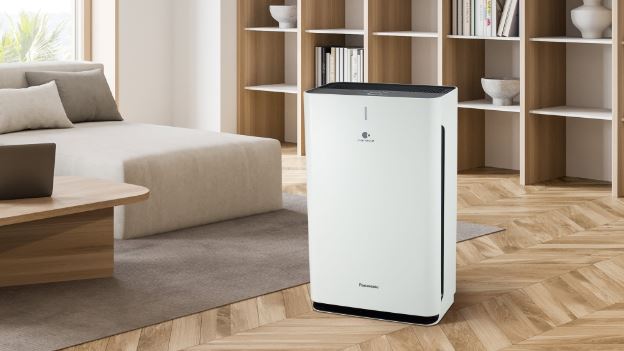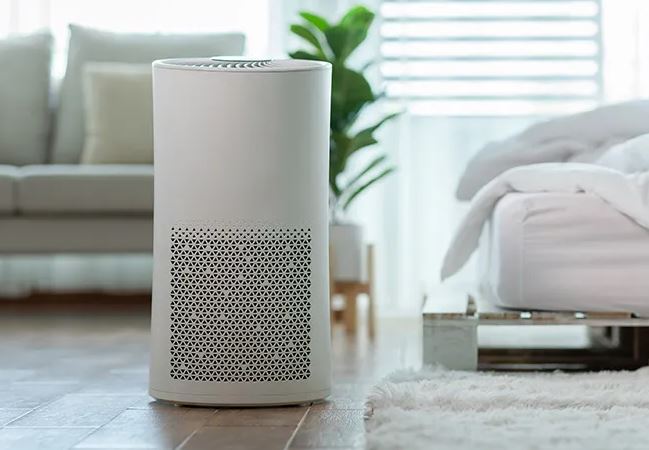Air Purifiers for Allergies: Breathe Easier and Live Better
Air Purifiers for Allergies: Breathe Easier and Live Better
Blog Article
In a health-conscious world, the air we breathe in has taken center stage for many people. With growing concerns over air pollution and a better understanding of the effects of indoor pollutants on our health, it's no surprise that the air purifier industry is experiencing tremendous growth.
Air purifiers are machines that remove contaminants from the air in a room, enhancing the air we breathe indoors. They are especially advantageous for those with allergies, asthma, or respiratory concerns as they can significantly lower the amount of allergens, pollutants, and irritants in the air. For those without respiratory concerns can rely on the added protection of air purifiers, as they give added assurance and protect against airborne pathogens.
This article will explore in detail the fascinating realm of air purifiers, exploring their benefits, the different types available, essential factors when making a purchasing decision, and how to get the most out of your device. By the end, you should have a comprehensive understanding of air purifiers and be able to choose wisely about whether investing in one is the best option for your household.

Unraveling Indoor Air Contaminants and Their Impact on Health
To understand why air purifiers are essential, it's key to comprehending the types of pollutants they target and the possible effects of exposure to these contaminants.
Indoor air pollutants can be broadly categorized into three primary types:
- Particulate Contaminants: This includes tiny solid and liquid particles floating in the atmosphere. Examples include pollen, smoke, dust, pet dander, and mold spores, to name a few. Particulate matter can lead to respiratory complications and cause allergic flare-ups.
- Volatile Organic Compounds (VOCs): VOCs are gases released by solids and liquids. Sources of VOCs include aerosol sprays, cleaning products, paints, and pesticides, among others. Exposure to VOCs can lead to eye, nose, throat irritation, headaches, and stomach discomfort.
- Biological Hazards: These include various microorganisms, including bacteria, viruses, mold, and mildew. They can cause a spectrum of health concerns, from allergy symptoms to more serious health risks.
The consequences of exposure on human health can greatly vary. For those suffering from respiratory ailments or weakened immune systems, exposure to indoor air pollutants can lead to serious health issues. Even for healthy people, prolonged exposure over time to certain pollutants can increase the risk of respiratory conditions and other health concerns over time.

The Science Behind Air Purifiers
Air purifiers use a range of physical and chemical mechanisms to effectively eliminate contaminants. Understanding the basic mechanisms employed by purifiers will help you appreciate their effectiveness and the different types available on the market.
Here are the key processes and technologies used in air purifiers:
- The Power of Mechanical Filtration: This is the most common method used in air purifiers. It involves using filters designed to trap airborne particles as air is passed through the filtration system. The filters can be made from various materials, each designed to target specific particle sizes and types. For example:
- Initial Defense: Pre-filters: These are usually the first line of defense, capturing larger particles like dust and hair.
- HEPA (High-Efficiency Particulate Air) filters: HEPA filters are remarkably proficient at capturing microscopic particles, including pollen, dust mites, and some bacteria and viruses. To be labeled a bona fide HEPA filter, it must effectively capture particles as small as 0.3 microns, with a minimum efficiency of 99.97%.
- carbon filtration: These filters are designed to reduce VOCs and odors.
- The Power of Ionization: Ionizers use electricity to create negatively charged ions, which bind to particles in the air. The charged particles are drawn to nearby surfaces or the purifier itself.
- Ozone: A Powerful Purifier: Some air purifiers use ozone, a powerful oxidant, to break down pollutants. While effective, excessive ozone exposure carries risks so these types of purifiers should be used with caution and only in unoccupied spaces.
- UV Light: A Radiant Solution: UV light can be used to effectively eliminate bacteria, viruses, and mold. UV light is commonly paired with filtration to trap particles, and UV light provides an extra layer of protection against biological hazards.
Choosing the Right Air Purifier
With a wide array of options available, selecting the ideal air purification system can be a daunting task. It's important to consider several factors to ensure you make the best decision for your unique requirements and space.
Here are some key considerations:
- Room Size: Air purifiers are typically designed for specific areas, so it's important to choose a model that can adequately cater to the room size. Most purifiers will list a suggested room size or CADR rating, which indicates the rate at which it can deliver clean air.
- Understanding Contaminants: Identify the types of pollutants you want to target. If you suffer from allergies, look for a purifier with a true HEPA filter. For odor removal, consider a model with a carbon-based filter. If you're concerned about viral and bacterial threats, a purifier with UV light disinfection might be best.
- Whisper-quiet Performance: Air purifiers can produce different noise levels, so if you plan to use it in a quiet bedroom or tranquil space, look for models with a low-noise or sleep mode.
- Maintenance and Costs: Consider the ongoing costs and maintenance requirements of the purifier. HEPA filtration systems may need periodic replacement, depending on use and environmental factors. Remember to budget for filter replacements when making your choice.
- Smart Innovations: Many purifiers offer smart features like air quality sensors, automatic modes, and Wi-Fi connectivity, allowing wireless control and real-time data. These features can improve your purifier's performance and ease of use.
Maximizing the Benefits of Your Air Purifier
Once you've invested in an air purifier and set it up, there are several things you can do to ensure it operates at optimal levels and delivers the maximum benefits:
- Optimal Placement: Position your purifier in an open area, away from walls and furniture, to ensure effective airflow. Avoid placing it near windows or doors as drafts can impact its efficiency.
- Keep it Running: For the best results, it's recommended to run your purifier around the clock. Many models have low-energy settings or automatic modes that adapt to the air quality, so you can maintain healthy air quality while conserving energy.
- Filter Maintenance: Regularly adhere to the recommended filter replacement schedule. Over time, filters become filled with trapped particles, impacting performance. Schedule filter replacements so you don't forget.
- Minimize Indoor Pollutants: Alongside using an air purifier, take steps to limit indoor contaminants. This could include frequent dusting and vacuuming, opting for natural cleaning solutions, and reducing chemical or aerosol usage. Report this page